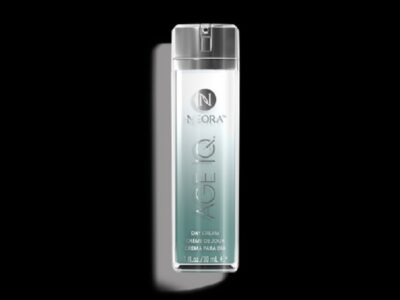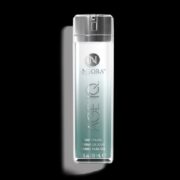There are many requirements that need to be followed when it comes to protecting workers from the dangers of machines. OSHA’s machine guarding standards set forth specific ways that these hazards can be mitigated, providing a comprehensive and measurable approach for safeguarding employees.
While some of these requirements can be cumbersome and costly to implement, the following five tips will help simplify compliance with OSHA machine guarding requirements:
- Evaluate Machinery Hazards – The first step in complying with machine guarding standards is to identify any potential hazards associated with machinery operations. This includes identifying contact points where an employee could be injured if they were to come into contact with the moving parts of the equipment.
- Implement Controls & Guards – Once hazards have been identified, specific controls and guards should be implemented to mitigate those risks. Methods for implementing control measures include using barriers, enclosures, protective covers/guards, and operator presence sensors (optical or mechanical).
- Train Employees on Safe Work Practices – It is critical that employees are aware of how to safely work around machinery. Training should cover hazard identification, as well as safe operating procedures for each type of equipment workers, may encounter on the job site.
- Regularly Inspect Equipment & Environments- In order to ensure safety protocols are being followed effectively, it is important to conduct regular inspections both of machines and their immediate surroundings.
- Use Common Sense! – Even when all required safeguards are in place, it’s always best practice to remind workers to breathe air Operating Machinery Safely. In order to operate machinery safely, employees must be aware of the hazards associated with each type of equipment. They should also be familiar with the necessary safety procedures for safe operation.
What is the machine guarding OSHA?
Machine guarding is a term used by the Occupational Safety and Health Administration (OSHA) to describe safety devices or measures that protect employees from contact with moving machine parts. While OSHA does not have a specific standard regulating machine guarding, employers must comply with general industry standards that contain provisions pertaining to machinery safeguarding.
One such standard, 29 CFR 1910.219, requires employers to ensure that machines are guarded “against inadvertent contact by personnel.” This means operators and other workers must be protected from contact with hazardous parts of machinery – including those located in the Point of Operation (the area where work is actually performed on the object). Guards should also shield workers from potential hazards created by malfunctioning equipment.
There are many types of guards available for protecting employees from moving machine parts, including barriers, shields, covers, activated-safety mats/switches, and warning devices such as signs and audible alarms. In some cases, it may be necessary to use more than one type of guard on the same machine.
The effectiveness of any particular guard depends on several factors – such as the speed at which the machinery operates; whether there are pinch points; how easily operators can access dangerous areas; clearances around the rotating shaft.
What are the three basic means of safeguarding machinery OSHA?
There are three basic means of safeguarding machinery as mandated by the Occupational Safety and Health Administration (OSHA): the point of operation, the power transmission device, and the operating controls. Each type of safeguard serves a different purpose in protecting workers from injury.
The point of operation is the most hazardous area on any machine. It is here that fingers, hands, arms, or other body parts can be caught between moving parts or pulled into rotating blades. Safeguards at this location usually take one of two forms: guards that cover dangerous areas to prevent contact with them or barriers placed around machines to keep employees away from harm’s way altogether. Guards must be sturdy enough not to be easily tipped over or pushed aside and they must also be adjustable so they can accommodate changes in machine size and configuration.
Power transmission devices include gears, chains, belts, spindles, and pulleys- all components through which energy is transmitted to moving machinery parts. These elements can cause serious injuries if they come into contact with skin or clothing. The most common form of protection against these hazards is chain slings covers which fit over drive shafts a d protect workers’ hands while providing easy access for maintenance operations Chain slings.
Operating controls, such as buttons, levers, knobs, and switches are necessary to start and stop the machinery. In order to protect employees from accidental starts or stops, these controls should be safeguarded so that they cannot be activated unintentionally. Examples of safeguards include guarding the control with a fence or shield so that it can only be operated by someone standing in front of it, installing coverings over moving parts that might cause injury if contacted accidentally, or using locks to prevent unauthorized operation.
What is the importance of machine guards in workplace safety?
Machine guarding is a critical aspect of workplace safety. It helps protect the machine operator and other employees in the work area from hazards created during the machine’s normal operation. Machine guards can help prevent serious injuries, such as amputations, lacerations, and burns. They also minimize noise levels and particles that may be released into the air.
The most common types of machine guarding are barriers, shields, and covers. Barriers help to physically block the operator from coming into contact with the dangerous parts of the machine. Shields protect against flying objects or sparks, while covers shield operators from moving parts.
Ideally, each employee should have their own personal guard on all machines that they operate. However, this is not always possible due to budgetary constraints. In these cases, it is important for employers to carefully select guards that will protect as many employees as possible from potential hazards associated with a particular machine.
There are several factors that must be considered when selecting appropriate machine guards:
– The speed at which the hazardous part moves;
– How close an employee can get to the hazard
– The size and shape of the hazard; and
– Whether any other safety devices (such as sensors) are already in place


